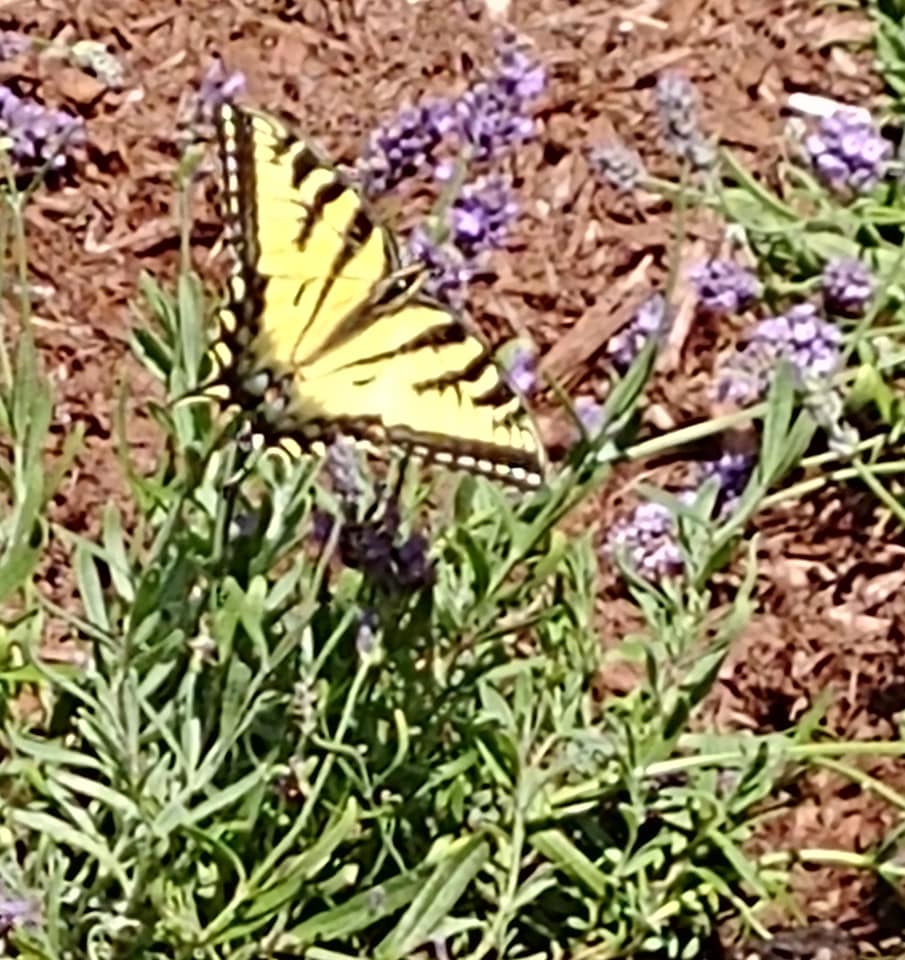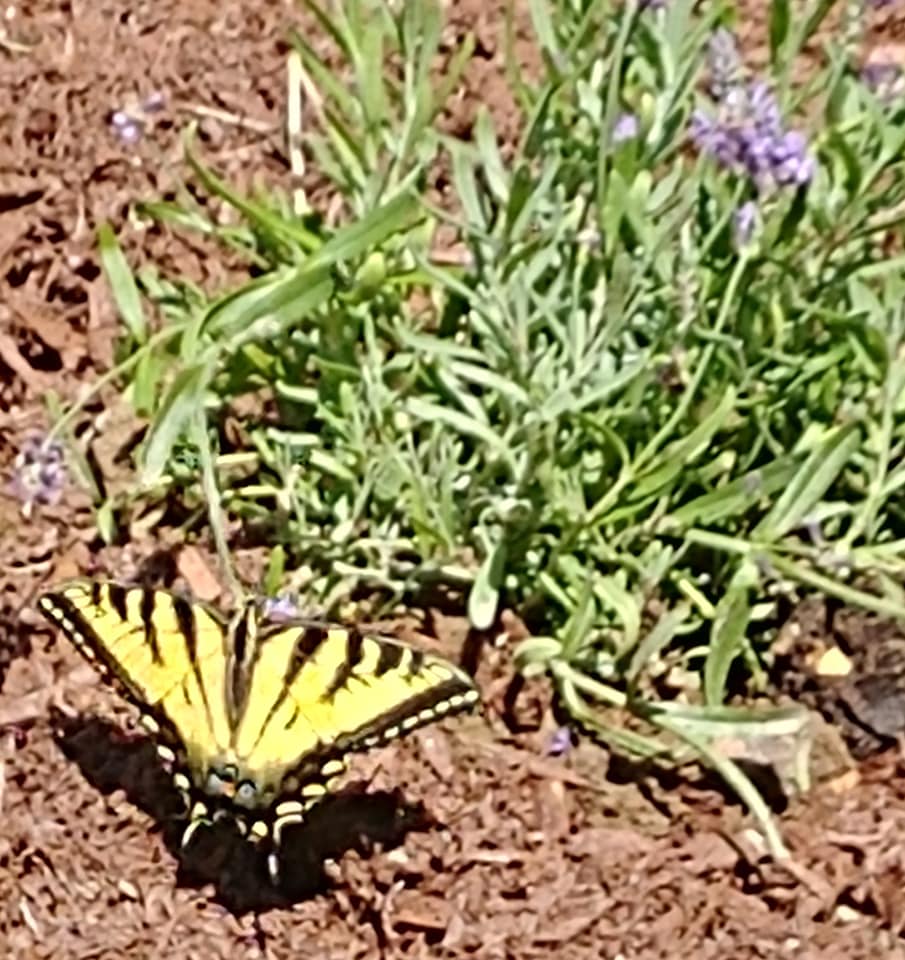Last updated on February 8, 2022

I planted a new perennial bed this weekend of coreopsis and lavender to reduce my lawn and attract pollinators. Just now between Zoom calls, I stepped on the back deck to survey my work and I saw not just one, but three Easter Tiger Swallowtail butterflies on the lavender.
Last summer, I loved riding a bike by fields of lavender on the island of Hokkaido, Japan. Ever since, I have wanted to plant lavender. The plant is an herb, native to the Mediterranean, which I can harvest for fragrant arrangements or many culinary purposes. Such a European plant, there is an English, French, Spanish, and Lavandin type, with heights that vary, and different flower forms. I am looking forward to the plant providing color from into the fall.
This spring, students in one of my classes had the option to design pollinator gardens for our Plymouth State University (PSU) campus to help fulfill our new Bee Campus USA designation. We are the only higher education institution in NH to have achieved this distinction, thanks to Mattea Powers,’ (now a PSU alumna), champion efforts. I live close to the PSU campus and a key idea to consider is the gardens I, and other Plymouth residents, create help form a community network of pollinator gardens.
Check out the “million Pollinator Garden Challenge,” which is “a nationwide call to action to preserve and create gardens and landscapes that help revive the health of bees, butterflies, birds, bats and other pollinators across America.” There is a connection between pollinators and the healthy food we eat. Individuals/families can register their gardens and be added to a map.
The first Zoom call this morning was on implementing the United Nation’s Sustainable Development Goals (SDG’s). We talked about the need to demonstrate local action. Another key takeaway message for me was to think about making linkages between goals, not to focus on targeting individual SDG’s. So, in that vein, I believe my pollinator garden is an example of addressing three SDG goals:
#15 Life on Land- which calls us to “protect, restore and promote sustainable use of terrestrial ecosystems, sustainably manage forests, combat desertification, and halt and reverse land degradation and halt biodiversity loss;”
#11 Sustainable Cities and Communities- which asks us to strive to, “make cities and human settlements inclusive, safe, resilient and sustainable;” and
#17 Partnerships for the Goals- Strengthen the means of implementation and revitalize the global partnership for sustainable development.”
I was once asked by a colleague on why seek out “Bee Campus USA” designation for PSU, especially when there is an annual fee to maintain the standing. Being a part of a larger partnership organization for sustainability means we learn about and can celebrate our collective progress. We don’t duplicate efforts and the results are synergistic.
Resources:
1. Bee Campus, https://www.beecityusa.org/what-is-a-bee-campus.html
2. Million pollinator gardens, http://millionpollinatorgardens.org/about/
3. UN Sustainable Development Goals, https://sdgs.un.org/goals
4. “The Fundamentals of Growing Gorgeous Lavender, Balogh, Anne, Garden Design, https://www.gardendesign.com/plants/lavender.html#english


